Galileo: Telescope, Heliocentrism, Conflict, Trial | Struggle and Achievements Towards Modern Science
イントロダクション
ガリレオ・ガリレイは、17世紀のイタリアで活躍した科学者であり、彼の業績は今もなお称賛される。
彼は望遠鏡を使い、天体観測を行い、地動説を提唱したことで知られている。
その発見は当時の科学界に大きな衝撃を与え、現代の天文学の基礎を築いたと言えるだろう。
また、ガリレイは実験を重視し、観察結果に基づいた理論を構築する手法を確立した。
彼の業績は科学界に限らず、哲学や宗教にも大きな影響を与えた。
この記事では、ガリレオ・ガリレイの生涯と業績について詳しく紹介する。
彼の科学への情熱と勇気に触れることで、我々も彼のような探求心を持ち、新たな発見を目指すことができるかもしれない。
Introduction
Galileo Galilei, a scientist who thrived in 17th century Italy, is still revered for his accomplishments today.
He is renowned for his use of the telescope, astronomical observations, and advocacy of heliocentrism.
His discoveries profoundly shook the scientific community of his time, laying the groundwork for modern astronomy.
Moreover, Galileo emphasized experimentation and formulated theories based on observational evidence.
His achievements had a significant impact not only on the scientific community but also on philosophy and religion.
This article delves into the life and contributions of Galileo Galilei, exploring his passion for science and courage, which continue to inspire us to pursue new discoveries.
ガリレオ・ガリレイとは?
ガリレオ・ガリレイとは、イタリア出身の科学者、数学者、物理学者、天文学者です。
イタリアのトスカーナ地方では、姓を単数形にした名前を付けることがあったそうで、「ガリラヤ人たち」を意味する「ガリレイ」の単数形である「ガリレオ」が名として付けられました。
彼は近代科学の父、天文学の父として称され、多くの重要な業績を残しました。詳細な内容を解説していきます。
ガリレオ・ガリレイの概要と重要性
ガリレオ・ガリレイは1564年2月15日、イタリアのピサで生まれました。彼の父親はヴィンチェンツォ・ガリレイという音楽家で、ガリレオは家族の中で長男でした。
母親の名前はジュリア・アマンナーティで、ガリレオに教育の基礎を築く役割を果たしました。
ガリレオが成長した時代はルネサンス期であり、芸術や科学、文化の発展が著しかった時代でした。
ピサはこの時代において学問の中心地であり、ガリレオは幼少期から知識に対する強い好奇心と独自の思考力を持っていたそうです。
特に数学や物理学に特に興味を抱き、自身の能力を発展させるために学びを追求しました。
そしてピサ大学で医学を学ぶために進学しましたが、後に数学や物理学への関心が高まり、これらの分野に専念することを決意しました。
彼はピサ大学を中途退学し、数学と物理学への研究を続けるためにフィレンツェに移りました。
フィレンツェでは、ガリレオは科学者や哲学者たちと交流し、彼らの知識とアイデアに触れる機会を得ました。
これらの要素が彼の後の科学的な発見と成就に繋がる基盤を築いたといえます。
また、ガリレオの重要性としては、科学的な知識の獲得方法や天文学・物理学の進歩だけでなく、科学と宗教の関係や科学の自由に対する理解と考え方にも大きな影響を与えた部分です。
彼の知識の追求は、近代科学の基礎を築き、科学的な思考と方法論の重要性を世界に広めました。
ガリレオ・ガリレイの生涯と業績の概要
ガリレオの生涯は、演劇になるほどドラマティックであるといえます。
父や弟が音楽の道に進む中、彼は数学や物理の分野に進み、天文学や物理学分野において歴史的な貢献をしているにもかかわらず、教会と対立して最終的には終身の謹慎を命じられることになります。
業績は多岐にわたります。
天文分野では望遠鏡で天体観測を行い様々な発見をしたり、物理学分野では物体の落下や斜面を転がる物体の運動についての研究を行い、アイザック・ニュートンの力学の基礎を作ったりました。
科学分野では、科学的な方法論の重要性を強調し、観察、実験、数学的なモデリングを組み合わせたアプローチを提唱したり、地動説を唱えたりと、その影響は現代にまで続いています。
地動説と天動説の対立
地動説と天動説の対立とは、地球が宇宙の中心であるか、太陽が宇宙の中心であるかという問題をめぐって、16世紀から17世紀にかけて争われた問題です。
天動説は、古代ギリシアの天文学者、プトレマイオスが提唱した説です。
プトレマイオスは、地球が宇宙の中心にあり、太陽や他の惑星は、地球の周りを円軌道で回転していると主張しました。
この説は、キリスト教の教義にも一致していたため、中世ヨーロッパでは広く受け入れられていました。
一方、地動説は、16世紀にポーランドの天文学者、ニコラウス・コペルニクスが提唱した説です。
コペルニクスは、太陽が宇宙の中心にあり、地球や他の惑星は、太陽の周りを楕円軌道で回転していると主張しました。
この説は、当時の科学的常識を覆すものであり、キリスト教の教義にも反していました。
地動説は、コペルニクスの死後も、多くの科学者によって研究されました。
ガリレオは、望遠鏡で天体観測を行い、地動説を支持する証拠を発見しました。
しかし、地動説は、ローマ教会によって異端として弾圧され、ガリレオは有罪判決を受けました。
望遠鏡の発明と観測結果の重要性
Galileo Galilei: An Overview
Galileo Galilei was an Italian scientist, mathematician, physicist, and astronomer.
In the Tuscan region of Italy, it was common to use the singular form of surnames, leading to “Galileo” derived from “Galilei,” which means “people of Galilee.”
He is hailed as the father of modern science and astronomy, leaving behind numerous significant achievements. This article will delve into the details.
Overview and Significance of Galileo Galilei
Galileo Galilei was born on February 15, 1564, in Pisa, Italy. His father, Vincenzo Galilei, was a musician, and Galileo was the eldest son in the family.
His mother, Giulia Ammannati, played a crucial role in laying the foundation for his education.
Growing up during the Renaissance, a period of significant advancements in art, science, and culture, Pisa was a center of learning where Galileo’s strong curiosity and independent thinking towards knowledge emerged early on.
He developed a particular interest in mathematics and physics and pursued studies in these fields after initially enrolling in medicine at the University of Pisa.
Subsequently leaving the university, Galileo moved to Florence to focus on his studies in mathematics and physics.
In Florence, he engaged with scientists and philosophers, exposing himself to their knowledge and ideas, laying the groundwork for his future scientific discoveries.
Galileo’s importance extends beyond advancements in scientific knowledge, astronomy, and physics; he profoundly influenced understanding and perspectives on the relationship between science and religion, and the concept of scientific freedom.
His pursuit of knowledge laid the foundation for modern science, emphasizing the importance of scientific methodology, combining observation, experimentation, and mathematical modeling.
Overview of Galileo Galilei’s Life and Achievements
Galileo’s life is almost dramatic enough to be a play.
While his father and brother pursued careers in music, he ventured into mathematics and physics, making historical contributions in astronomy and physics, despite facing a lifelong censure from the Church.
His achievements span various fields:
In astronomy, he made groundbreaking discoveries through telescopic observations of celestial bodies, laying the groundwork for Isaac Newton’s mechanics by studying falling objects and the motion of objects rolling down slopes.
In the scientific field, he emphasized the importance of scientific methodology, advocated for observational evidence, and proposed the heliocentric model, which continues to influence modern science.
Conflict Between Heliocentrism and Geocentrism
The conflict between heliocentrism and geocentrism revolved around whether the Earth or the Sun was at the center of the universe, a debate that intensified from the 16th to the 17th century.
Geocentrism was proposed by the ancient Greek astronomer Ptolemy, asserting that the Earth is at the center of the universe, with the Sun and other planets orbiting it in circular paths.
This theory aligned with Christian doctrine and was widely accepted in medieval Europe.
In contrast, heliocentrism was proposed by the Polish astronomer Nicolaus Copernicus in the 16th century, suggesting that the Sun is at the center of the universe, with the Earth and other planets orbiting it in elliptical paths.
This theory challenged scientific norms at the time and conflicted with Christian doctrine.
Heliocentrism persisted beyond Copernicus’s death, with many scientists continuing to research and support it.
Galileo, using the telescope for astronomical observations, discovered evidence supporting heliocentrism.
However, heliocentrism was deemed heretical by the Roman Catholic Church, and Galileo was ultimately sentenced to lifelong house arrest.
Importance of the Invention of the Telescope and Observational Results

Galileo’s Telescope (Replica at Griffith Observatory)
望遠鏡の発明とそれによる観測結果は、天文学と科学の進歩において極めて重要です。
まず、望遠鏡の発明により、人々は以前に比べて遥かに遠い天体を観察することが可能になりました。
これにより、太陽系外の星や惑星、銀河、星雲などの天体の存在や特徴を詳しく調べることができるようになりました。
次に、望遠鏡の使用により、天文学者たちは宇宙の広がりや構造、星の進化、天体の運動などの重要な発見を行いました。
これによって、天文学は大きく発展し、宇宙の理解を深めるための基礎が築かれました。
また、望遠鏡での観測により、ガリレオは木星の衛星や金星の位相の変化などを望遠鏡で観測し、これらの観測結果をもとに地動説を唱えるに至りました。
望遠鏡の発明と観測結果は、天文学の進歩、天体の発見と研究、科学的な方法論の確立に大きな影響を与えました。
これらの成果は天文学の発展だけでなく、科学の進歩や人類の宇宙に対する理解の向上にも寄与しました。
重力の法則と物理学への貢献
ガリレオは物理学においても重要な貢献をしました。
ガリレオは自由落下運動や斜面を転がる物体の運動について研究しました。
彼は実験と観察を通じて、物体の落下速度や物体が傾斜した面を転がる際の運動を調査しました。
そして、物体の落下速度が時間によらず一定であることを発見し、また、斜面を転がる物体が垂直に落下する物体と同じ速度で加速することも示しました。
ほかにも、後のアイザック・ニュートンが発展させた万有引力の法則の先駆けとなる、重力の影響を受けた物体の運動を研究し、物体の自由落下や斜面を転がる物体の運動についての理論を提案しました。
また、ガリレオの研究は、物理学の発展に大きな影響を与えました。
彼は実験と観察に基づく科学的なアプローチを推進し、定量的なデータを収集して物体の運動を解明する方法を示しました。
ガリレオの重力の法則と物理学への貢献は、科学の発展において重要な一歩となりました。
彼の研究は、自然の法則の理解と予測のための科学的なアプローチの重要性を示し、後の物理学者たちの研究に大いに影響を与えました。
The Invention of the Telescope and its Observational Results in Astronomy and Science
The invention of the telescope had a profoundly significant impact on the advancement of astronomy and science.
Firstly, the invention enabled people to observe distant celestial objects far more effectively than ever before. This allowed for detailed examination of celestial bodies such as stars, planets, galaxies, and nebulae beyond the solar system.
Secondly, the use of telescopes facilitated crucial discoveries in astronomy, including insights into the vastness and structure of the universe, the evolution of stars, and the movements of celestial bodies. These advancements greatly expanded our understanding of the cosmos and laid the foundation for further astronomical exploration.
Moreover, Galileo Galilei used his telescope to observe phenomena such as Jupiter’s moons and the changing phases of Venus. These observations played a pivotal role in his advocacy of the heliocentric theory, challenging the prevailing geocentric model.
The invention of the telescope and its observational results not only propelled astronomy forward but also contributed significantly to the establishment of scientific methodology. These achievements fostered scientific progress, enhanced our comprehension of the universe, and enriched humanity’s understanding of space.
Contribution to the Law of Gravity and Physics
Galileo Galilei made substantial contributions to physics as well.
He conducted studies on free-fall motion and the motion of objects rolling down inclines. Through experiments and observations, Galileo investigated the velocity of falling objects, demonstrating that objects fall at a constant rate regardless of their weight. He also showed that objects rolling down inclined planes accelerate at the same rate as objects falling vertically.
Furthermore, Galileo’s research on the effects of gravity on object motion laid the groundwork for later developments, including Isaac Newton’s formulation of the law of universal gravitation. Galileo’s theoretical proposals and experimental approach significantly influenced the development of physics.
His exploration emphasized the importance of scientific methods based on experimentation and observation, providing quantitative data to elucidate the motion of objects. Galileo’s contributions to the law of gravity and physics marked a crucial step in the advancement of science, illustrating the significance of scientific approaches in understanding and predicting natural laws, profoundly influencing subsequent physicists’ research.
ガリレオ・ガリレイの対立と裁判
当時、カトリック教会はアリストテレスの教えに基づく天動説を支持していました。
この説は聖書の記述とも一致しているとされ、教会によって公式な教義とされていました。
ガリレオは望遠鏡を使って天体観測を行い、観測結果から地動説を支持する証拠を見つけました。
彼はこれらの結果を元に、「地球は太陽の周りを公転している」と主張しました。
これはカトリック教会の教義とは矛盾していたため、ガリレオは教会の反対を受けることになります。
ガリレオの教会との対立は、科学と宗教の関係における重要な出来事となりました。
教皇庁との対立
教皇庁とはカトリック教会の中枢機関であり、カトリック信徒の信仰生活や教会の運営に深く関与している機関です。
教皇庁は、教皇を通じてカトリック教会の教義や指導を示し、カトリック教会の統一と一体性を維持する役割を果たしています。
そのため、教皇庁は地動説の提唱を異端とみなし、ガリレオを異端審問にかけることとなりました。
裁判と禁書の出版
異端審問の結果、ガリレオは教会の教義に反したことを認めさせられ、自説を撤回するように要求されました。
彼は教会の圧力に屈し、地動説を否定する声明を出しました。
その後、ガリレオは終身の自宅軟禁刑に処され、科学的な研究活動を禁止されました。
対立のきっかけとなった地動説を支持する内容を含む『天文対話』は1632年に出版されましたが、異端審問の結果、禁書となりその他のガリレオが書いた可能性のある書物もカトリック諸国では出版が禁止されました。
ガリレオの世界観と時代背景
ガリレオの生きたルネサンス期は、ヨーロッパで芸術・文化・知識の再興を促した時代です。
この時期には、古代ギリシャ・ローマの学問や人文主義の思想が再評価され、人間の理性と観察に基づく知識の追求が重要視されました。
この知識の追求は、科学的な観察と実験の重要性を強調する科学革命へとつながりました。
ガリレオはこの時代の中で活動し、科学革命の一翼を担いました。
彼は観察と実験を通じて自然界の法則を解明しようとし、従来の教会の教義や伝統的な世界観に疑問を投げかけました。
Galileo Galilei’s Conflict and Trial
During his time, the Catholic Church supported the geocentric theory based on Aristotle’s teachings, which aligned with biblical descriptions and was upheld as official doctrine by the Church.
Using a telescope for astronomical observations, Galileo found evidence supporting the heliocentric theory, asserting that “the Earth revolves around the Sun.”
This contradicted Catholic Church doctrine, leading to opposition against Galileo from the Church.
Galileo’s conflict with the Church became a pivotal event in the relationship between science and religion.
Conflict with the Papal Authority
The Papal Authority, the central institution of the Catholic Church, plays a crucial role in guiding Catholic doctrine and maintaining unity within the Church.
The Papal Authority viewed the heliocentric theory as heretical and subjected Galileo to an inquisition.
Trial and Publication of Forbidden Works
Following the inquisition, Galileo was forced to recant his views that contradicted Church doctrine. Under pressure, he publicly renounced the heliocentric theory.
Subsequently, Galileo was sentenced to lifelong house arrest, prohibiting him from further scientific research activities.
His work “Dialogue Concerning the Two Chief World Systems,” which advocated the heliocentric theory, was published in 1632 but was banned as forbidden literature due to the inquisition’s outcome. Other potentially authored works by Galileo were also banned from publication in Catholic countries.
Galileo’s Worldview and Historical Context
Galileo lived during the Renaissance, an era in Europe that sparked a revival of arts, culture, and knowledge.
During this period, there was a reevaluation of ancient Greek and Roman scholarship and the rise of humanist thought emphasizing rationality and observational knowledge.
This pursuit of knowledge contributed to the Scientific Revolution, which emphasized the importance of scientific observation and experimentation.
Galileo operated within this period, contributing to the Scientific Revolution.
He sought to uncover the laws of nature through observation and experimentation, challenging traditional Church doctrines and conventional worldviews.
ガリレオ・ガリレイの伝記と著作
ガリレオの著書は禁書とされましたが、1835年に禁書目録から削除され、後世に伝わることとなります。
これらは、科学史や近代科学の発展において重要な位置を占めています。
また、ガリレオの生涯に関して様々な伝記も書かれており、ガリレオの貢献と彼の時代の複雑な背景を理解するために役立つ情報を提供しています。
生涯と経歴の概要
ガリレオの生涯に関する著書として以下のようなものがあります。
『Galileo』: ジョン・L・ハイルブロンによるガリレオの伝記です。
彼の生涯、業績、科学的な貢献について包括的に解説しています。
『Galileo: A Life』: ジェームズ・レストン・ジュニアによるガリレオの伝記書です。
ガリレオの人生、科学的な発見、彼の時代の社会的・宗教的な背景について詳しく掘り下げています。
『Galileo’s Daughter』: ダヴァ・ソーベルによるガリレオの伝記です。
彼の生涯と科学的な業績を描きながら、彼と彼の娘スザンナの関係にも焦点を当てています。
ガリレオの主要な著書には以下のようなものがあります。
Galileo Galilei’s Biography and Works
Galileo’s writings were once banned but were removed from the Index of Forbidden Books in 1835, ensuring their transmission to future generations.
These works hold a significant place in the history of science and the development of modern science.
Additionally, various biographies of Galileo have been written, offering valuable insights into his contributions and the complex backdrop of his era.
Overview of Life and Career
Regarding Galileo’s life, the following biographical works are notable:
- “Galileo” by John L. Heilbron: This biography provides a comprehensive account of Galileo’s life, achievements, and scientific contributions.
- “Galileo: A Life” by James Reston Jr.: This book delves deeply into Galileo’s life, scientific discoveries, and the societal and religious contexts of his time.
- “Galileo’s Daughter” by Dava Sobel: Focusing on Galileo’s life and scientific achievements, this biography also explores his relationship with his daughter, Susanna.
Some of Galileo’s major works include:
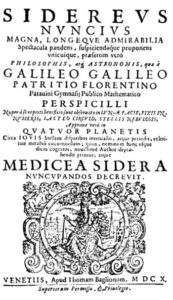
“Starry Messenger” (1610)
『星界の報告』: この著書は、1610年に出版されたガリレオの最も有名な著書です。
彼はこの中で、望遠鏡を用いて観測した天体の発見と観察結果を報告しました。
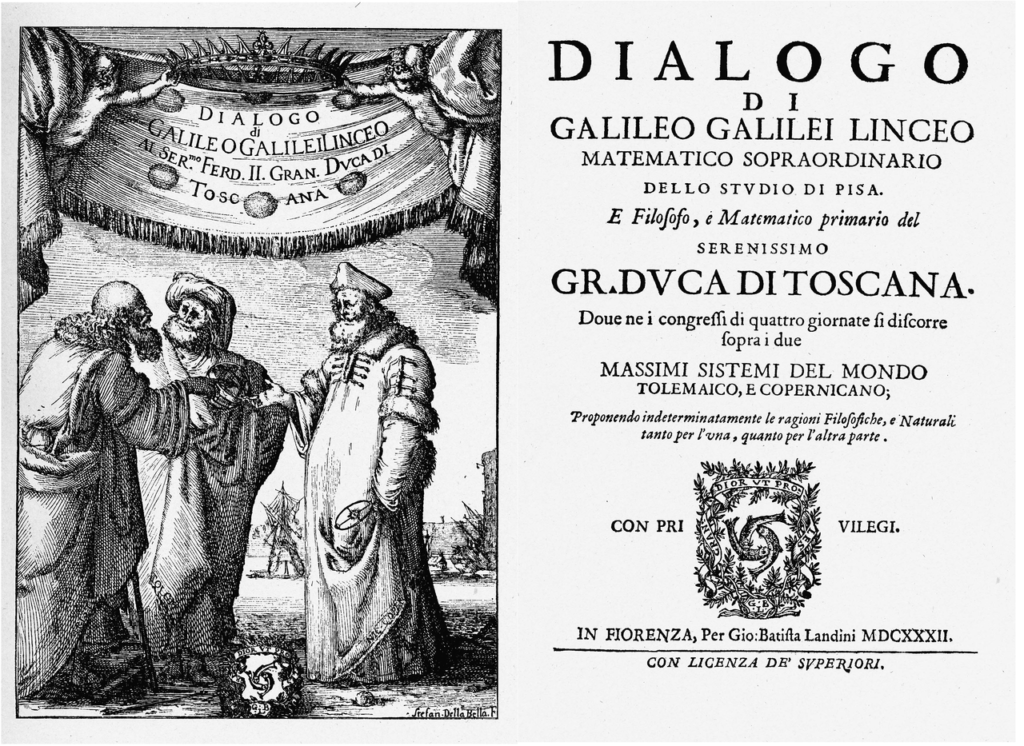
『天文対話』: 1632年に出版されたこの著書は、地動説と天動説の比較を通じて、地球の動きに関するガリレオの主張を提示しました。

『新科学対話』: ガリレオが1638年に書かれた著書で、力学と物体の運動に関する重要な業績を含んでいます。
“Dialogue Concerning the Two Chief World Systems” (1638): A work by Galileo encompassing significant contributions to mechanics and the motion of bodies.
ガリレオ・ガリレイの名言集
ガリレオは数々の有名な言葉を残しています。
ガリレオの残した名言は、ガリレオの知識、信念、そして人間としての姿勢を表しています。
彼の科学的な探究心や自由な思考は、著書や伝記、名言となり、後の科学者や思想家に大きな影響を与えました。
有名な引用や格言の紹介
「それでも地球は動いている」: ガリレオは異端審問の後も、地動説の真実を主張していました。
この言葉は彼が地球が公転しているという考えを撤回したものの、それにもかかわらず地動説の正しさを信じていたことを示す象徴的な言葉です。
「私は、私たちに感覚、理性、知性を授けた同じ神が、それらを使わないように意図していると信じる必要はないと感じています」:ガリレオは、自分の知性と理性を活用することが重要であると主張しています。
この言葉は、人間が自分の能力を最大限に発揮し、探求することの重要性を強調しています。
「私は、私が彼から何かを学べないほど無知な人に出会ったことはありません」: ガリレオが謙虚さと学びの姿勢を持っていたことを示す言葉です。
彼は他の人々からも学ぶことができると信じ、自身の知識と洞察力をより高めるために努力しました。
ガリレオの思想や人生に関する洞察
ガリレオの名言から、彼が科学的な探求心と勇気を持ち、自身の信念を貫くことで知られていることがわかります。
彼は教会の権威や時代の常識にとらわれず、科学と理性に基づいた真実を求め続けました。
また、そのことにより、彼が勇気と決断力を持ち、科学と人間の自由を高く評価していると洞察します。
Collection of Galileo Galilei’s Quotes
Galileo left behind numerous famous words that reflect his knowledge, beliefs, and personal integrity.
His scientific curiosity and independent thinking have profoundly influenced later scientists and philosophers through his writings, biographies, and memorable quotations.
Introduction to Famous Quotes and Sayings
“I still say that the Earth moves”: Despite recanting his belief in heliocentrism after his trial, this phrase symbolizes his unwavering conviction in the truth of the Earth’s motion around the Sun.
“I do not feel obliged to believe that the same God who has endowed us with sense, reason, and intellect has intended us to forgo their use”: Galileo emphasized the importance of using one’s intellect and reason to their fullest potential.
“I have never met a man so ignorant that I couldn’t learn something from him”: This quote illustrates Galileo’s humility and his openness to learning from others, constantly seeking to enhance his own knowledge and insight.
Insights into Galileo’s Philosophy and Life
From Galileo’s quotes, we understand him as a figure known for his scientific curiosity, courage, and steadfastness in his beliefs.
He pursued truth based on science and reason, unbound by the authority of the Church or the conventional wisdom of his time.
Through this, he demonstrated courage and decisiveness, valuing both science and human freedom highly.
ガリレオ・ガリレイに関連する文化と芸術作品
ガリレオ・ガリレイの人物像や業績は、多くの文化と芸術作品に影響を与えてきました。
彼の科学的な貢献や対立的な人生の物語は、音楽、文学、映画などのさまざまな形式で描かれてきました。
いくつかの例を挙げ解説していきます。
ガリレオを題材にした映画やドラマの紹介
ガリレオを題材とした映画やドラマはこれまでに世界中で放映されてきました。
その一部を紹介します。

『Galileo』(1968):イタリアとブルガリアの合作映画です。
リリアーナ・カバーニが監督を務めており、ベネチア映画祭やイタリアの映画祭にノミネートされています。
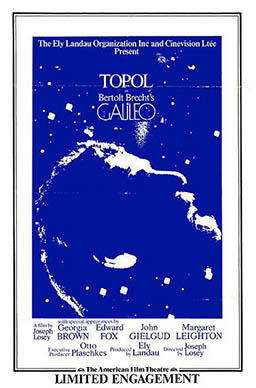
『Galileo』 (1975):アメリカ映画です。ジョセフ・ロージーが監督を務めています。
ブレヒトの戯曲「 ガリレオ 」の「アメリカ」版に沿った伝記映画となっています。
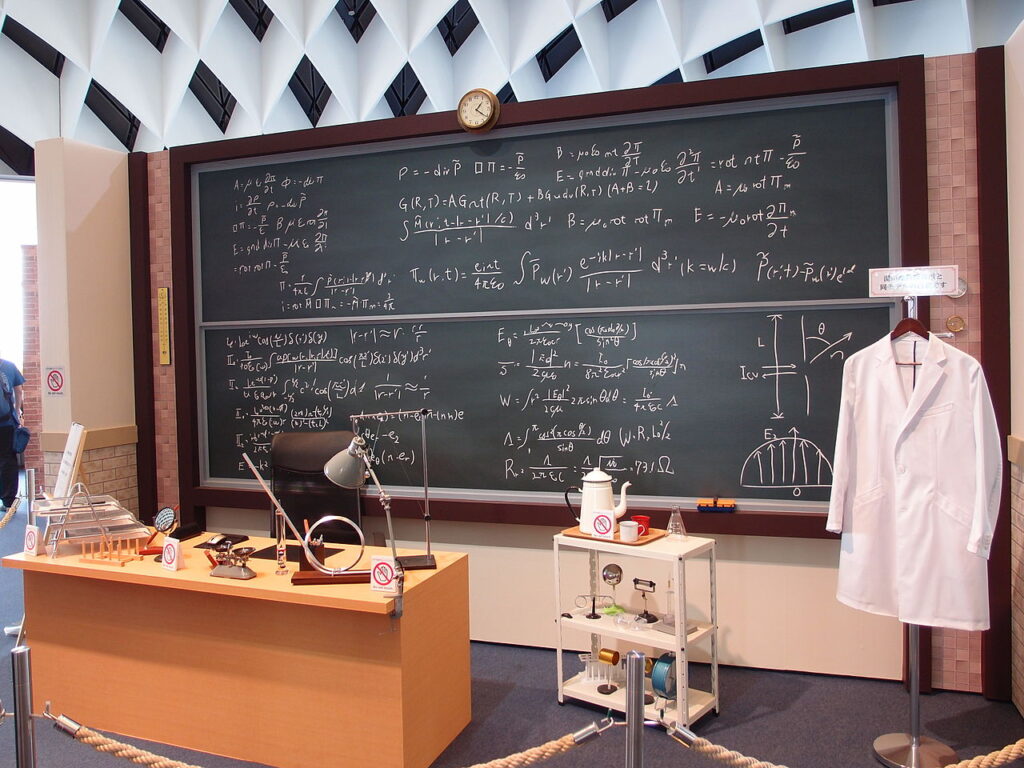
『ガリレオ』(2007~):日本のドラマ、映画です。こちらの作品はタイトルこそガリレオですが、ガリレオ・ガリレイの話ではなく、東野圭吾さんの推理小説ガリレオシリーズを映像化した作品になります。
ガリレオをテーマにした芸術作品や音楽

ガリレオを題材とした芸術作品や音楽もまた数多くあるため、その一部を紹介します。
『宗教裁判にかけられるガリレオ』:ジョセフ・ニコラス・ロバート・フルーリーによる絵画作品です。
ルーブル美術館に保管されています。
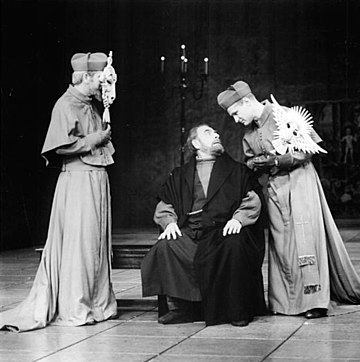
『ガリレイの生涯』:ドイツの劇作家ベルトルト・ブレヒトによる戯曲です。
先ほども少し触れましたが、映画化もされています。
『オペラガリレオ・ガリレイ』:フィリップ・グラスによるオペラ作品です。アン・マンソン指揮のポーランド・オペラ管弦楽団の曲がCD化されています。
まとめ
ガリレオ・ガリレイは、伝説的な科学者としてその名を刻んでいます。
彼の偉業は、地動説の提唱や望遠鏡の発明、天体観測による天文学の発展など、数々の業績によって示されています。
彼の研究は、科学の進歩に大きな影響を与え、現代の科学の基礎を築いたと言えます。
また、彼の遺産は現代の科学者たちにも受け継がれており、彼の研究成果は今日でも広く利用されています。
ガリレオ・ガリレイの偉大さは、その業績を振り返ることで改めて感じることができます。
彼の研究によって開かれた新たな視点や発見は、科学の進歩に大いに貢献しており、私たちの生活にも大きな影響を与えています。
ガリレオ・ガリレイの功績は、科学史上不朽のものとして語り継がれています。
彼の偉大さと遺産は、我々にとって永遠のインスピレーションとなるでしょう。
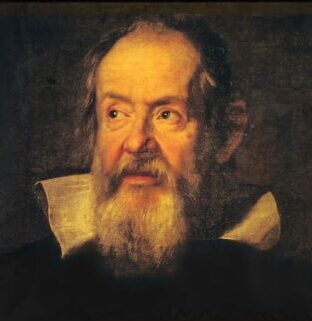
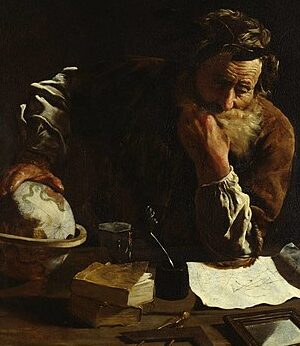
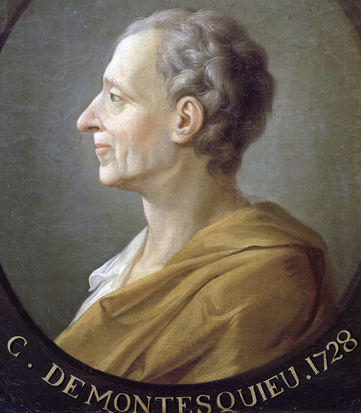
コメント